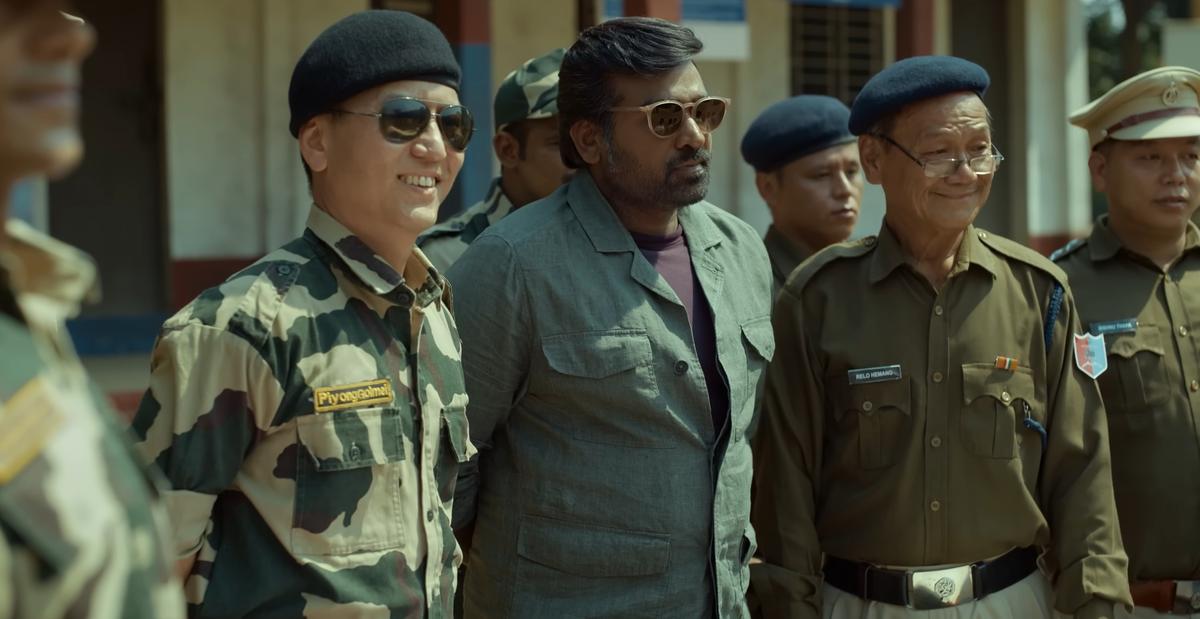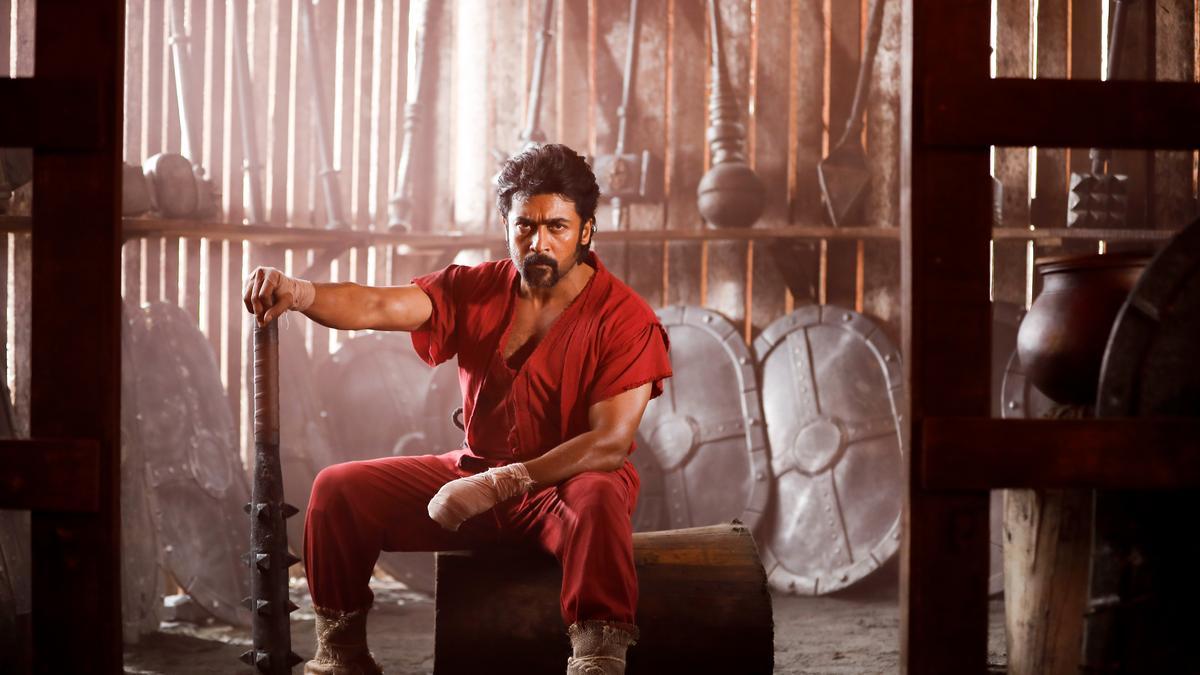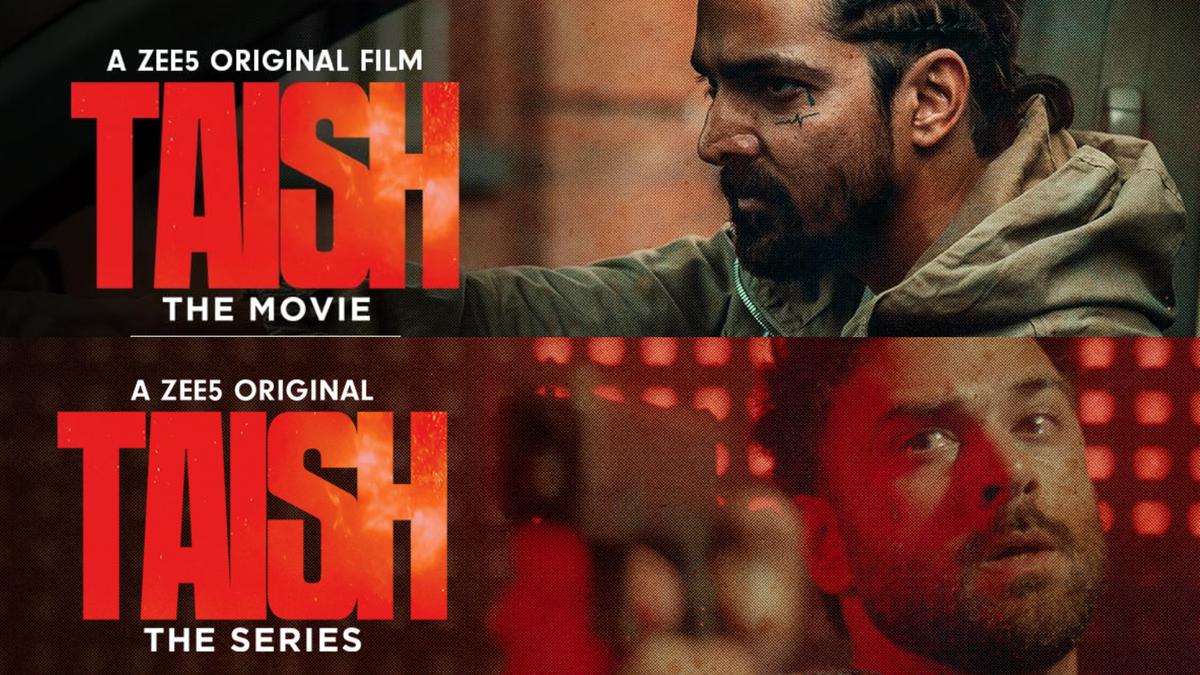In the first half of 2025 alone, more than half a dozen Hindi web shows have made noise on streaming platforms, from popular returning titles like Paatal Lok Season 2 andPanchayat Season 4 to fresh attempts like Dabba Cartel, Khauf, Black Warrant, and more. A slate like this would be a dream come true for Tamil cinema, where only Suzhal: The Vortex Season 2 remains the sole notable long-form entry this year. This isn’t an exception, but a continuation of a familiar trend over the last few years.

Banking on the success of titles like Suzhal: The Vortex and Vilangu in 2022, streaming platforms doubled down in 2023 with almost a dozen web series releases in Tamil. Of them, only Ayali and Sweet Kaaram Coffee got considerable eyeballs, and in 2024, only six Tamil titles got any recognition from viewers. What are the obstacles to making a series in Tamil? Is there a hesitancy among Tamil filmmakers towards long-form? Can a few experiments change the game?
Are Tamil storytellers hesitant to embrace the longer format?
First and foremost, the consolidation of power in a star-driven industry is a concern for series-making. Producer SR Prabhu believes that only when stars allow producers to spearhead projects could the longer format become an add-on mission. Producer G Dhananjayan bluntly asserts that big stars wouldn’t do web series “because they don’t want to be seen continuously.” It affects their star aura, he says. But the issue isn’t limited to big names only. After all, in Tamil, even stars apart from the Big 4 category haven’t gotten a notable web series in their repertoire; the daring Vijay Sethupathi might have played a Tamilian in Farzi, but he is yet to make a straight Tamil series.

Vijay Sethupathi made his Hindi series debut in ‘Farzi’
Director Pushkar, of the Pushkar-Gayathri duo, believes that more stars like Aishwarya Rajesh (who acted in his series Suzhal) will begin to see value in the format over the next few years, when it becomes apparent how some stories cannot be told in the theatrical format. “Look what a bunch of actors like Manoj Bajpayee, Nawazuddin Siddiqui and Rajkummar Rao have done in Bollywood. As with cinema, experiments will happen on smaller stories. First, you’ll have certain kind of actors coming in. Then you’ll have certain stars coming in, and then the big stars will come in.” Pushkar points out how HBO took 10-12 years to get the big stars, or how Netflix couldn’t get many big stars except Kevin Spacey when they began making original series.
The exhaustive process to pitching
For now, even if a Sethupathi takes a leap of faith in the format, streaming platforms continue to wield the control to greenlight projects. Firstly, producers don’t have a lot of say in how a project gets shaped in a streaming platform, because, as Dhananjayan (who worked as Head of Tamil content for a platform) says, OTTs prefer not to work with a third-party producer. “They just want a line producer to execute the project.”
This means that the platforms retain control over the production and post-production of a series. The process to get a project greenlit sounds exhausting. “Firstly, directors won’t get two-to-three hours to narrate their pitch; they get two hours at most. Then they receive their feedback, write and send the script, and if approved, translate the script to English so that it goes to the next level,” says Dhananjayan.
The endless process of approvals, Dhananjayan says, are where writers struggle a lot. “It goes level after level, and everyone needs to approve it without making any changes. Meanwhile, the director or writer struggles financially to maintain the film’s office and the writers’ room.” Even then, there is no certainty if an approved project could see the light of day. A project Dhananjayan approved in 2020 is yet to find a streaming window. “Changes are made to the script, budget discussions keep happening, and then the production happens for a year, following which they take a year more for post-production. Even during post-production, they keep editing and changing the material.”
If such is the process within a streaming platform, how are Hindi titles being released one after the other? “Because with Hindi titles, the teams in Mumbai can relate to the language immediately and make a decision. Here, local teams might help, but even then, it’s slow. The Mumbai team usually has to approve, and they see only the subtitled version. How will they connect with the nuances of South India?” says Dhananjayan.
A series writer’s block
While the hangups with the streaming ecosystem are real, there’s another problem: a lack of writing expertise in series form. Prabhu blames the lack of studio set-ups for this. “Tamil industry, particularly, is dominated by directors, not writers, which is why the concept of writers’ room isn’t popular here,” he says. Dhananjayan, on the other hand, believes local storytellers are yet to cultivate these skills because they don’t understand the difference it shares from a traditional movie script.
“Historically, we are all equipped to tell a story in two hours, but the longer format requires multiple stories with a lot of layers and characters building on a story.” The structure of a teleplay isn’t as simple as a screenplay. “In a web series, every 23–24 minutes, they need a peak, a climactic scene. Most people are struggling to write stories that run for 250 minutes across 10 episodes, each 25 minutes long. They can write a 250-minute story, but it won’t have something engaging every 20–30 minutes,” says Dhananjayan.

Pushkar echoes this. “In a film, you will have to go from the first act to the second act, and then you will have a midpoint. That’s where the story takes a turn; now, a series needs a lot of that. In a series, you start an episode with what it is about, but you don’t resolve it in the end; instead, you continue to the next episode. So the techniques differ,” says the Suzhal maker.
Bloated narratives and experiments with formats
A couple of weeks ago, filmmaker Karthik Subbaraj aired his desire to re-render his latest Suriya-starrer, Retro, as a limited series, an attempt he believes would find support from Netflix. The director revealed that he has many exciting footage from the film that didn’t make the final cut. Filmmakers releasing extended cuts isn’t new, and so you might wonder if this is just a way to sell all that extra flab that was left out in the theatrical cut. But Karthik has asserted he isn’t merely inserting deleted scenes; he hopes to restructure the narrative into a series in which “the emotions will be deeper and the action more detailed,” as he told Galatta Plus.
This chimes with a recent pattern in Tamil cinema, in which films feel ‘over-written’ or rushed, as if they could not do with a minute more on the run-time. The RJ Balaji-starrer Sorgavaasal comes to mind: the crime thriller had immersive world-building and many promising primary characters, but the director seemed to struggle to fit everything within the stipulated runtime. There have been several narratives in recent years—such as Viduthalai: Part 2, Kingston, and Retro—that make you wonder if a series format would have been better suited them. This feels especially true when you look at a Black Warrant in Hindi, which is what Sorgavaasal could have been like. Or when a Mobland from the West reminds you of a recent beached whale that is presumed to be the result of a five-hour film being cut into a 163-minute potboiler.
Pushkar agrees that certain films, like Retro, could be translated into a series. “Karthik understands the series medium well, and each chapter in Retro could be very well made into an episode because they are written with a structure. He also has these bookends for each chapter, and so I understand why he wishes to do it.”

Suriya in ‘Retro’
Interestingly, Anurag Kashyap’s Gangs of Wasseypur films were released as a mini-series on Netflix in the US and Canada; these regions are used to such experiments, like Quentin Tarantino’s The Hateful Eight, which even Karthik had mentioned to Netflix when he wanted to release his previous film, Jigarthanda Double X, as a series. But there is an example of a film being released as a series in India. Originally shot as a film, it was re-edited as a series, and both versions were released simultaneously on a streaming platform.
The fascinating case of ‘Taish’
That title is Bejoy Nambiar’s Taish on ZEE5, a great case study to comprehend Karthik’s attempt. Firstly, Taish happened in the early days of the OTT boom, when films could release in theatres without sealing a streaming deal. Bejoy didn’t have to convince streamers because no streaming deal was struck when he tried this experiment. “That’s what freed us up. I was working as an independent producer, and we were looking to release this film theatrically. However, since the pandemic hit, we were trying to figure out an online sale for the film. During one of the trial shows of a preliminary cut of the film, a Netflix representative said if this would have worked better as a series.” The thought stuck with Bejoy. “I bounced the idea with my editor, and we thought we could try and see if we could edit a series version. So we didn’t have anyone to impress or convince. It was an experiment that we were trying, and it kind of worked out.”
The filmmaker could then pitch the project as both a film and a show to ZEE5. “The COVID setback helped us look at the film from a different perspective and see what more we can do with it,” he says.
It’s notable that ZEE5 was open to Bejoy’s unique pitch; after all, this platform seems to be the sole exception in a market that seldom wishes to experiment with form. You would be surprised to know that the platform telecasts movie versions of their popular shows, like Ayali, on their television channel. A filmmaker’s stubbornness to keep his material intact and ZEE5’s openness to look at a film pitch as a series got us Vilangu.

Promos for Bejoy Nambiar’s ‘Taish’, released in 2020 as both a film and a web series on ZEE5
Raghavendra Hunsur, Chief Content Officer, Zee Entertainment Enterprises Ltd, states that the success of Vilangu has boosted their commitment towards long-form narratives in Tamil. “We’ve seen a growing interest among Tamil audiences in episodic storytelling, particularly when narratives carry cultural nuance and emotional depth. We also remain open to format innovation and experiments like Taish, where a narrative was presented both as a film and series, reflects our willingness to reimagine storytelling structures to best serve audience preferences,” says Raghavendra.
The long-form streaming space is in its infancy in southern India. Even if experiments grab headlines, real change could emerge only when writers see potential in the format. After all, experiments like Retro, a material suitable for two contrasting formats, are rare, and the economics of having two versions of the same product on the servers might prevent it from becoming a trend. That said, platforms need to be open to such unique pitches and invest in regional storytelling.
“What’s needed here is a stronger commitment to regional cinema,” says Dhananjayan. “In Hindi, they release 12 originals a year. That’s one per month. If they have that kind of commitment in Tamil, things will move faster. Right now, there’s no such structured push. That’s what’s really missing.”

